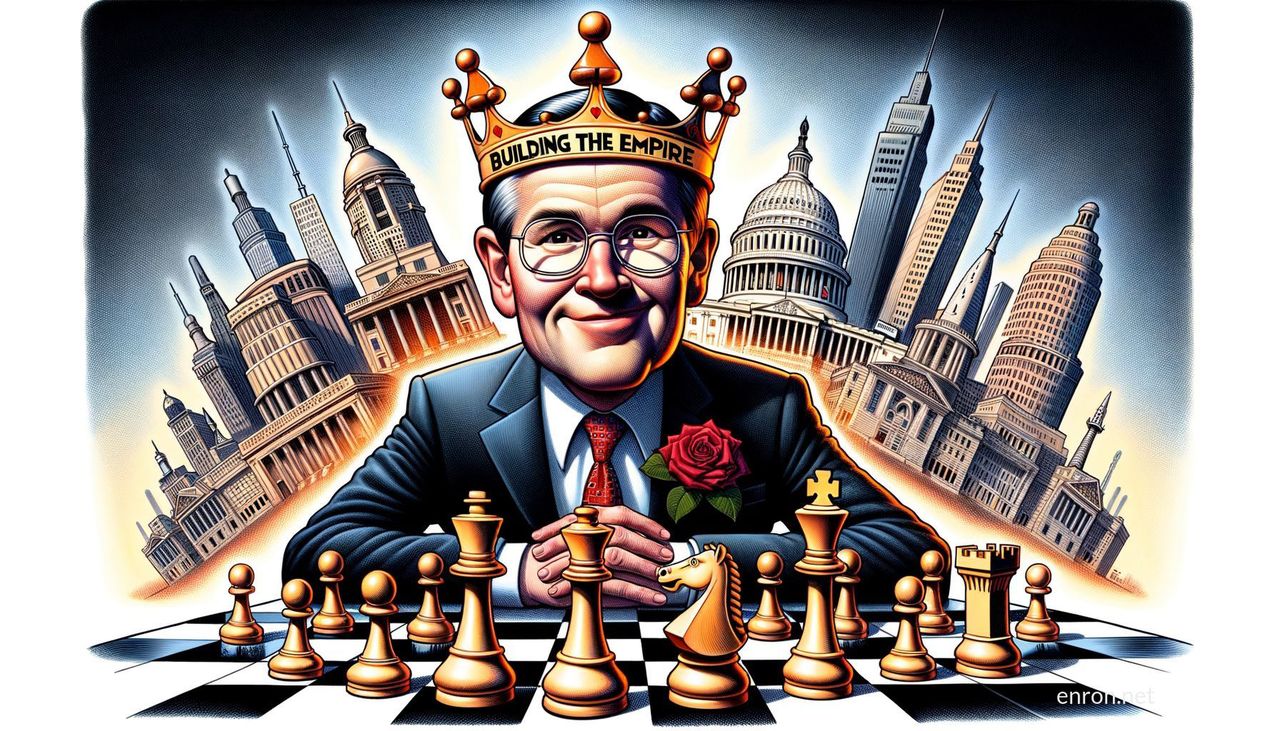Empire of Deceit: Enron’s Strategic Moves to Dominate the Energy Market

Unraveling the High-Stakes Schemes Behind Enron’s Rise and Fall
Building the Empire: Enron’s Strategic Moves to Dominate the Energy Market
Introduction
The rise and fall of Enron Corporation is one of the most sensational episodes in modern business history, a veritable roller-coaster of ambition, innovation, hubris, and ethical collapses. At its zenith, Enron was a giant in the energy market, proclaimed as the epitome of modern business innovation. Central to this ascent were a series of strategic moves aimed at market domination, a tale of corporate maneuvers that, at first glance, seemed to herald a new era in the energy sector.
The Early Foundations: Lay and Skilling's Vision
At the heart of Enron's journey lay the visionaries—Kenneth Lay and Jeffrey Skilling. Kenneth Lay, a charismatic economist, co-founded Enron in 1985 through the merger of Houston Natural Gas and InterNorth. This combination created a diversified energy business, but what Lay envisioned was a corporation that would dynamically transform how the energy market operated.
Enter Jeffrey Skilling in 1990. A Harvard MBA and McKinsey alum, Skilling was the embodiment of the corporate wunderkind. His innovative idea was simple yet profound: transform Enron from a traditional natural gas pipeline company into a high-tech, market-savvy energy trading powerhouse.
The Birth of the Energy Trading Market
One of Skilling's groundbreaking moves was the development of the 'Gas Bank' in the early 1990s. The concept, revolutionary at the time, was akin to a financial bank but for natural gas. Enron would buy gas supply contracts from producers and sell them to consumers, managing risk and ensuring stable prices. It was an early attempt at turning energy into a tradable commodity, aligning with the burgeoning free-market ethos of the time.
EnronOnline, launched in November 1999, was another leap forward. Essentially an online trading platform, it allowed real-time, high-volume trading of energy contracts. This platform wasn't just an operational tool—it was a bold statement signaling Enron's intention to dominate energy trading. Through EnronOnline, the company not only increased its transaction efficiency but also gained a wealth of market data, providing a competitive edge.
Diversification and International Expansion
Determined to cement its dominance, Enron didn't limit itself to natural gas. The company embarked on aggressive diversification, venturing into electricity, water, broadband, and even weather derivatives. This diversification was underpinned by a robust financial engineering manipulation strategy involving complex financial instruments and special-purpose entities (SPEs), allowing Enron to obscure debts and present an image of unstoppable growth.
In tandem, Enron set its sights on the global stage. The company invested heavily in international markets with bold projects like the Dabhol Power Plant in India and major investments in Europe, South America, and later in Asia. These ventures were not just about market penetration but about establishing Enron as a global energy juggernaut.
The California Energy Crisis: A Double-Edged Sword
One of the most controversial aspects of Enron's strategic moves was its involvement in the California energy crisis of 2000-2001. Through then-secretive practices like 'Ricochet' and 'Death Star'—tactics involving the manipulation of energy supply and transmission—Enron exploited regulatory loopholes, creating artificial shortages that led to skyrocketing prices and rolling blackouts.
While immensely profitable, these strategies planted the seeds of distrust and scrutiny. The crisis spotlighted the risks inherent in Enron's aggressive market tactics and exposed its manipulation for financial gains at the expense of public welfare.
Innovation at All Costs
Enron's relentless innovation was not without merit. It pioneered a market that allowed for the liberalized trading of electricity and gas, and in doing so, contributed to a more dynamic and interconnected energy market. However, behind this facade of innovation laid intricate webs of deceit. Skilling and his team indulged in 'mark-to-market' accounting, allowing Enron to book potential future profits as current income. This method, while legal, was a slippery slope that skewed financial statements and masked the company's actual financial health.
Additionally, partnerships with financial institutions, such as the controversial deals with Merrill Lynch, further inflated Enron's credibility and market reach. These partnerships, driven by a mix of genuine market opportunities and aggressive risk-taking, created an illusion of invincibility.
The Downfall and Legacy
The empire Enron built, characterized by strategic foresight and daring, was ultimately a house of cards. The complexities and obscurities of its financial maneuvers, coupled with razor-thin ethical margins, led to its collapse in late 2001. What was once heralded as an icon of 21st-century capitalism became a cautionary tale.
Enron's pursuit of market domination involved a blend of genuine innovation and unscrupulous deception. Lay and Skilling created a corporate culture that prized market creativity but also incentivized reckless risk-taking and ethical compromise. In the end, Enron's legacy is dual-faceted: its transformative impact on energy markets and its monumental collapse, which underscored the perils of unchecked corporate ambition.
Wrap-Up
The story of Enron's strategic moves to dominate the energy market is a complex saga of ambition, innovation, and ethical missteps. It serves as both a beacon of business ingenuity and a stark warning about the potential for downfall when innovation transcends the boundaries of ethical business conduct. The empire that Enron built, with its towering ambitions and fatal flaws, remains etched in the annals of corporate history as a pivotal lesson for future generations.
This article offers a comprehensive exploration of how Enron's strategic aspirations and innovative maneuvers shaped its rise and tragic fall, grounding the narrative in a blend of human ambition and institutional hubris.